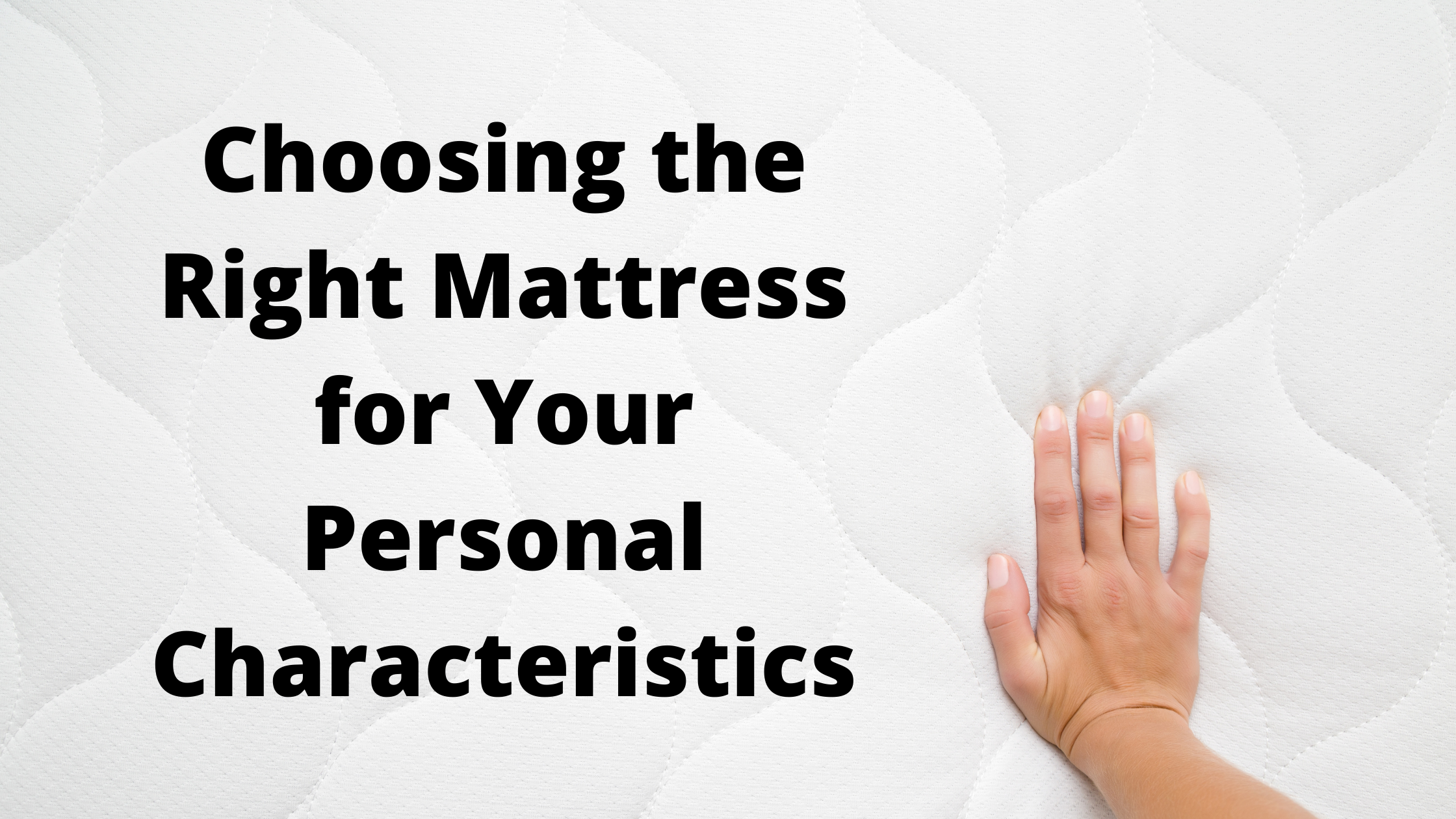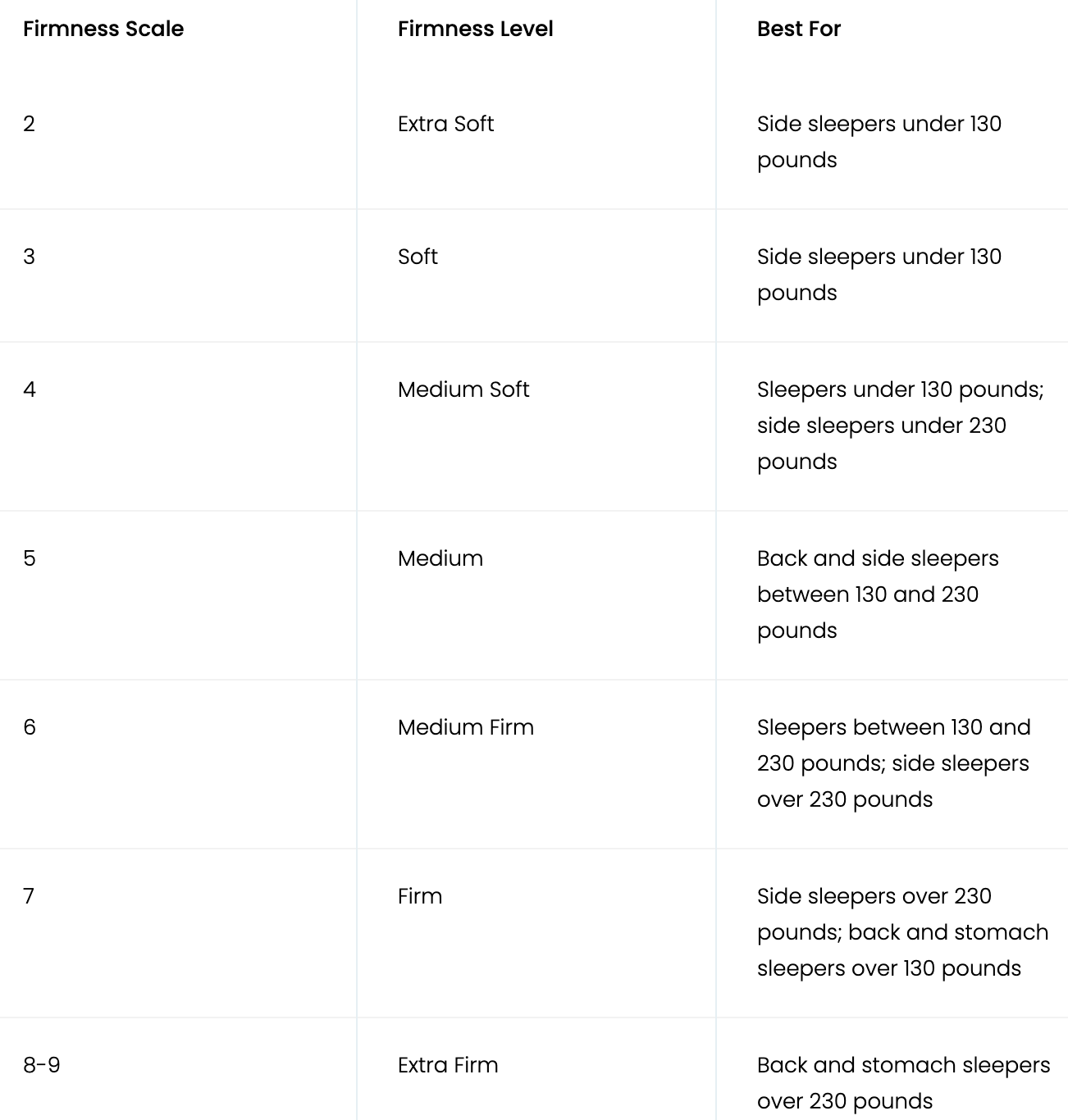 Comfort is a huge part of getting good quality sleep. If you are uncomfortable, then chances are you spend more time tossing and turning than actually getting quality sleep. Adults are recommended to get 7-9 hours of sleep in order to properly function. Part of ensuring that you're getting that time is making sure when you're in bed, you're getting great sleep. Part of that is finding either the right mattress or right mattress topper. Continue reading to find out how to choose the best bed for you!
Comfort is a huge part of getting good quality sleep. If you are uncomfortable, then chances are you spend more time tossing and turning than actually getting quality sleep. Adults are recommended to get 7-9 hours of sleep in order to properly function. Part of ensuring that you're getting that time is making sure when you're in bed, you're getting great sleep. Part of that is finding either the right mattress or right mattress topper. Continue reading to find out how to choose the best bed for you!
Mattress Types
There are various types of mattresses that you can get, and it's important to find the one that works for you. Here are the basics when it comes to choosing a mattress type:
Foam: They are made entirely of foam with no coils or springs. They can provide great contouring to the body, pressure relief, and motion isolation, making them a good fit for side sleepers and couples. Among foams that are used in these mattresses, memory foam is the most well-known.
Innerspring mattresses have a coil-based support system with some other layers. The coils offer some support, but are not the best for pressure relief. Their sleep surface is bouncy with little motion isolation. However, they are cheaper than other options, so a popular pick.
Hybrid mattresses have two elements: an innerspring support core and a substantial foam comfort system. The layers can include foam or latex, and sometimes will have shorter layers of coils. They are both bouncing and contouring with low heat retention, so they can be a good fit for any sleeping position.
Latex mattresses are made with latex rubber. They have great bounce and durability with moderate contouring. When they are made with natural and organic latex, they are perfect for eco-friendly shoppers.
Airbeds are built with an air chamber as their support core, with a pump that is controlled by a smartphone or remote that is built into the mattress to add or remove air quickly and easily. Couples love airbeds because they can adjust their individual side by simply removing or adding air.
Firmness
The type of mattress is not the only quality that matters, but also the firmness. Some like a very firm bed, while others like something that is softer and bouncier. Those with pain may want something a little more stable, while others may want something that feels like a cloud.
The only way to know if a mattress works for you is by going and trying it out in the store. Identify which firmness level you are most comfortable with. Below is a table to give you a preliminary idea about what is best for you.

Personal Factors for Choosing a Mattress
Besides the factors of the mattress, there are personal factors that you need to consider when thinking about what is the best mattress. Those with chronic pain or different sleeping positions may need a certain mattress over the other. Some of these personal considerations include pain, sleeping position, and body type.
Pain
Back pain is a huge reason why getting good quality sleep can be such a task for some people. An unsupportive mattress is only one of the myriad reasons for unresolved back pain. In those without back pain, proper support can prevent pain from arising, and in those who already have issues, the right mattress may help to alleviate them.
In order to choose the right mattress, it's imperative to understand the type of back pain. Someone with acute back pain may only need temporary relief from their mattress. This may mean using extra pillows or adjusting their sleep position. For chronic back pain, more significant steps may be needed, like choosing a mattress that is firmer or softer mattress.
For those with lower back pain affecting the bottom vertebrae (L1-L5). It is the most common type of back pain and one of the leading reasons why people visit their doctors. Spending too many hours in a bad sleeping position can exacerbate the problem. For back and stomach sleepers, a soft bed may put pressure on the natural curve of the lumbar spine. For side sleepers, this can arise if the shoulders and hips are supported, causing the entire spine to have issues. Side sleepers should look for medium soft to medium firm mattresses, and back and stomach sleepers should look for medium firm to firm beds with light conforming.
Middle and upper back are far less common. The anatomy is more stable, so pain in these areas can be tied to more serious problems. Poor posture can create unnecessary tension in the middle or upper back. A pressure-relieving mattress that contributes to spinal alignment can reduce the risk of pain.
Sleeping position
The position you sleep in doesn't only matter if you have back pain. It also matters in general, as the right mattress can provide the right support to reduce the risk of developing chronic pain.
Back sleepers put a great deal of pressure on their lower back. If the mattress is too soft, then the torso can sink in more deeply than the upper and lower back, creating a U-shape. This can cause strain. If the mattress is too firm, there won't be any accommodation of the slight curve in the lower back. As a result, back sleepers do best with a medium-firm to firm mattress with light to moderate contouring.
Side sleepers have sharp pressure points where the body is the widest, most notably at the shoulders and hips. On a too-soft mattress, these points will dip out of line with the rest of the spine. On a too-firm mattress, they will feel the impact of those points and be prone to misalignment. Side sleepers need medium soft to medium firm mattresses.
Stomach sleepers are similar to back sleepers and put pressure on the lumbar spine. They do best with a firm mattress that can keep them from forming a U-shape and that won't feel suffocating when lying face-down on the mattress.
Combination sleepers go through many positions throughout the night. Therefore, these sleepers should choose the mattress based on the position they spend the most time in. Medium firm offers the best support across a range of positions.
Body types
Body shape and weight also influence the type of mattress to ensure one is getting the best support. Those who are very light and don't weigh much don't sink into a mattress very far. To get the best contouring, they will do well on a softer mattress. Those between 130-230 pounds should choose a mattress based on the sleeping position from the previous section. Foam, hybrid, and latex mattresses are all solid options and can be selected based on their specific features and designs.
Those who are over 230 pounds will sink further into a mattress, especially the heavier parts of the body, which can negatively impact spinal alignment. These individuals normally do better with mattresses that are a little bit firmer to help avoid that risk. A responsive mattress is easier to move on top of and can be valuable to those who are heavier because it reduces feelings of being stuck in the bed. Durability is also very important, so heavier people should opt for a thicker mattress system with high-density materials.
Weight is not the only determinant. Those with broader shoulders or hips need a softer mattress with more contouring, especially if they are side sleepers. This helps to keep the spine in alignment. Those over six feet tall should look closely at mattress dimensions to ensure they can stretch out comfortably.
Comfort is important in ensuring that you're getting good sleep. If you are still having trouble getting good sleep, even with a new mattress, then the problem may go beyond what type of mattress you have. Click the orange button below to take a free online sleep test and speak with one of our sleep professionals today.
Source:
https://www.sleepfoundation.org/mattress-information/how-to-choose-a-mattress

